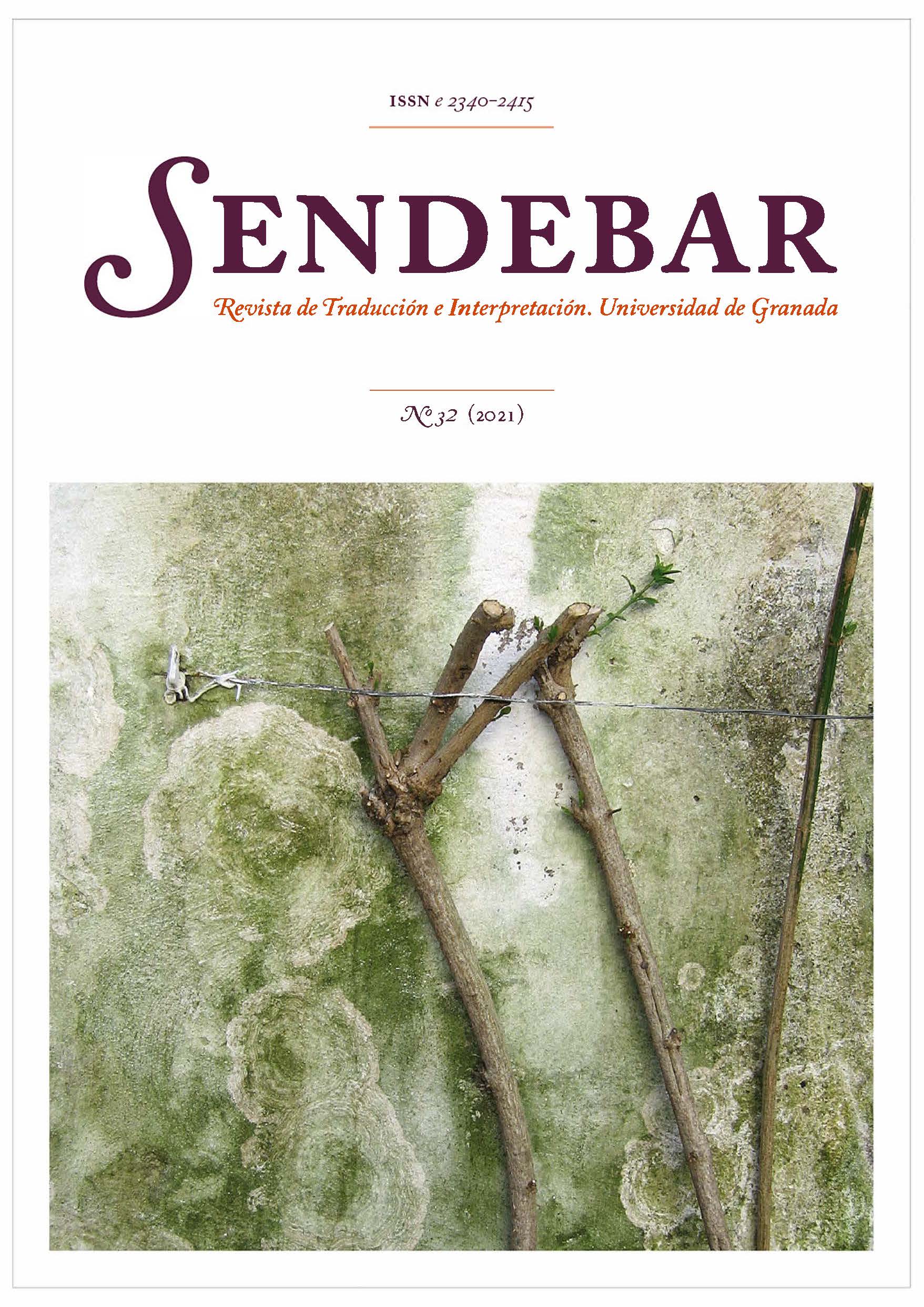The Reception of Multilingual Films: The Case of Handia
DOI:
https://doi.org/10.30827/sendebar.v32.13509Keywords:
audiovisual translation, multilingualism, reception studies, BasqueAbstract
This paper presents a reception study on a multilingual product in audiovisual translation (AVT), which is, to date, an underresearched field. In this contribution the authors present the reception analysis of the multilingual fiction film Handia (Aitor Arregi and Jon Garaño 2017), which was filmed mainly in Basque and contains various L3. Data were gathered using GoogleForms and contacting participants via social networks. A total of 534 responses were obtained. After a demographic analysis of the participants, information was collected and divided into three blocks: audiovisual consumption habits, characteristics of the viewing of the film and perception of the film and its translation. The results were analysed both quantitatively and qualitatively and show that participants are not fully aware of the version they have watched. Nevertheless, they have a good perception of the film and its translation, mostly in subtitled versions.
Downloads
References
Chaume, F. (2013). Panorámica de la investigación en traducción para el doblaje. Trans, 17, 13-34.
Corrius, M. y Zabalbeascoa, P. (2011). Language variation in source texts and their translations: The case of L3 in film translation. Target, 23(1), 113-130.
Dávila, I. (6 de febrero de 2018). Euskararen trataera oso errealista egiten du ‘Handia’-k [en línea]. El Diario Vasco. https://www.diariovasco.com/culturas/premios-goya/euskararen-trataera-errealista-20180206231125-nt.html
Delabastita, D. y Grutman, R. (2005). Introduction: Fictional representations of multilingualism and translation. En D. Delabastita y R. Grutman (Eds.), Fictionalising Translation and Multilingualism, Linguistica Antverpiensia, 4, 11-34.
Díaz-Cintas, J. (2015). Multilingüismo, traducción audiovisual y este-reotipos: el caso de Vicky, Cristina Barcelona. En F. Chaume y M. Richart-Marset (Eds.), Prosopopeya. Revista de crítica contemporánea: Traducción, ideología y poder en la ficción audiovisual, 9, 135-161.
Díaz-Cintas, J. y Massidda, S. (2019). Technological Advances in Audiovisual Translation. En M. O’Hagan (Ed.), The Routledge Handbook of Translation and Technology (pp. 255-270) Routledge.
Di Giovanni, E. (2020). Reception Studies and Audiovisual Translation. En Ł. Bogucki y M. Deckert (Eds.), The Palgrave Handbook of Audiovisual Translation and Media Accessibility (pp. 397-413). Palgrave Macmillan.
Di Giovanni, E. y Gambier, Y. (2018). Reception Studies and Audiovisual Translation. John Benjamins.
Doherty, S. y Kruger, J. L. (2018). The development of eye tracking in empirical research on subtitling and captioning. En T. Dwyer, C. Perkins, S. Redmond y J. Sita (Eds.), Seeing into Screens: Eye Tracking and the Moving Image (pp. 46-64). Bloomsbury.
Gobierno Vasco, Gobierno de Navarra y Euskararen erakunde publikoa (2016) VI. Encuesta Sociolingüística. Comunidad Autónoma de Euskadi. [Archivo PDF] http://www.euskadi.eus/contenidos/informacion/argitalpenak/es_6092/adjuntos/Resumen_VI_Encuesta_Socioling%C3%BC%C3%ADstica_EAE_%202016_1.pdf.
Fernández, H. (6 de febrero de 2018). ‘Handia’, lista para el reestreno. Deia. https://www.deia.eus/2018/02/06/ocio-ycultura/cultura/handia-lista-para-el-reestreno
ICAA (Instituto de la Cinematografía y de las Artes Audiovisuales) (10 de octubre de 2020). Catálogo de películas calificadas. http://www.culturaydeporte.gob.es/cultura/areas/cine/mc/catalogodecine/inicio.html
Krämer, M. y Duran Eppler, E. (2018). The Deliberate Non-Subtitling of L3s in Breaking Bad: A Reception Study. Meta, 63(2), 365–391.
Manterola, E. (2019). Evolución del cine en euskera y su traducción. Monti, 4, 113-144.
Martínez, J., Frances, M., Agirre, K. y Manias-Muñoz, M. (2015). Zinegin Basque film festival: a non-existent audience revealed. Participations. Journal of audience and reception Studies, 12(1), 725-738.
Ramos Caro, M. (2018). Los estudios de recepción en traducción audiovisual: aspectos metodológicos. En A. Rojo (Ed.), La investigación en traducción. Una revisión metodológica de la disciplina (pp. 99-124). Anthropos.
Sepielak, K. (2016). Voice-over in multilingual fiction movies in Poland. Translation and synchronization techniques, content comprehension and language identification. [Tesis doctoral no publicada]. Universitat Autònoma de Barcelona.
Szarkowska, A. y Wasylczyk, P. (2018). Five things you wanted to know about audiovisual translation research but were afraid to ask. Journal of Audiovisual Translation, 1(1), 8-25.
Szarkowska, A., Żbikowska, J. y Krejtz, I. (2013). Subtitling for the deaf and hard of hearing in multilingual films. International Journal of Multilingualism, 10(3), 292-312.
Tamayo, A. y Manterola, E. (2019). La creación, la traducción y el tratamiento lingüístico en Handia. Hikma, 18(1), 283-314.
Downloads
Published
How to Cite
Issue
Section
License
Terminos de Licencia Sendebar.

















